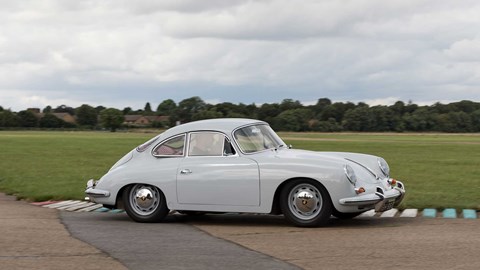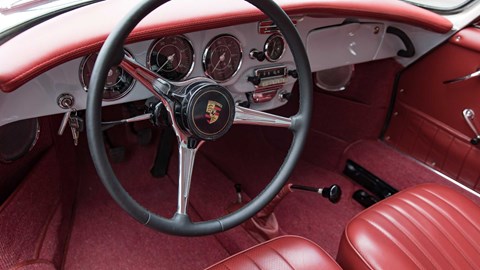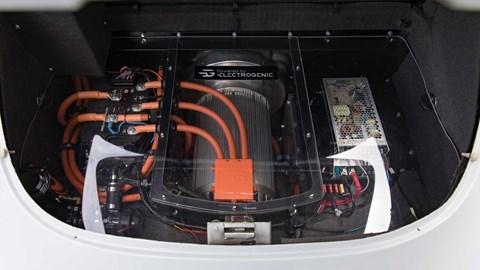► 1963 Porsche 356C given EV powertrain
► Thought to be first electric conversion
► Electrogenic conversion is fully reversible
Electric-vehicle conversion specialist Electrogenic has revealed what it believes to be the first fully electric example of the Porsche 356.
Using a ‘fully reversible’ process, the car’s 1.6-litre, flat-four petrol engine has been replaced with an air-cooled, Netgain ‘Hyper9’ brushless electric motor. The new unit generates 120bhp and 173lb ft of torque, both of which are increases on the original powertrain.

Meanwhile a 36kWh battery has been fitted for around 140 miles of range, with a 15kW charging ability allowing the cells to be topped up in under two-and-a-half hours.
Electrogenic says both the battery size and charging speed can be tailored to suit individual customers depending on their needs.
At the request of this car’s owner the exterior design is unchanged, with no visual references to the 356’s new zero-emissions powertrain. The interior has also been left alone, although the rev counter now displays motor revs and the fuel gauge shows the amount of charge left in the battery.

This electric 356 remains rear-wheel driven and the original four-speed gearbox has been retained.
'With this conversion, the brief from the customer was simple, they wanted a nice little electric run-around that retained the driving character of the 356 – including the engagement of running up and down the manual gearbox – but in the relaxed way that driving a 356 induces,' said Steve Drummond, director and co-founder of Electrogenic.
'It was also important to the customer that they could utilise the full 12kW of charging capacity that they have at home, and naturally, as most of our customers do, they wanted it to look totally original – which is what we’ve achieved here.'
Oxford-based Electrogenic lays claim to a number of world-first electric conversions of classic cars, most notably of the Triumph Stag, Morgan 4/4, Citroen DS and Jaguar E-Type.
The Porsche used here is a 356 C, produced in 1964 near the end of the car’s production run.
'Such is the popularity of converting classics to electric power now, this customer sent us a car for conversion which had only very recently had a full engine rebuild,' explained Ian Newstead, also director and co-founder of Electrogenic. 'Even compared to the freshly rebuilt original engine, the new electric motor we’ve installed not only has more power, but it more than doubles the torque available, which means that the car is more relaxed in the gears and a real pleasure to drive.

'Not only that, but it also broadens the audience for classic cars, too. The owner of this particular example has always loved driving the car, but other family members were always put off by the complexities and difficulty of driving a classic – not the case anymore, it is a smooth and easy drive that absolutely anyone can enjoy – enthusiast or not.'